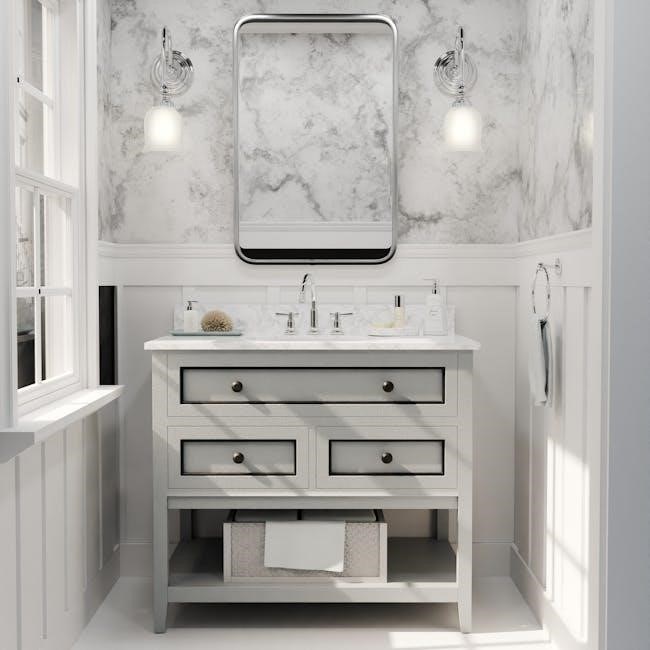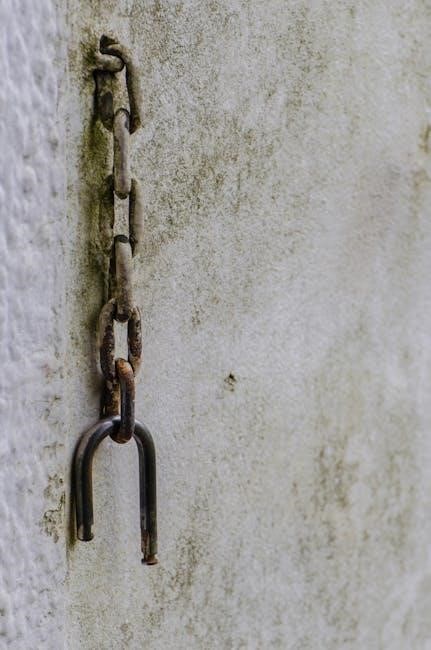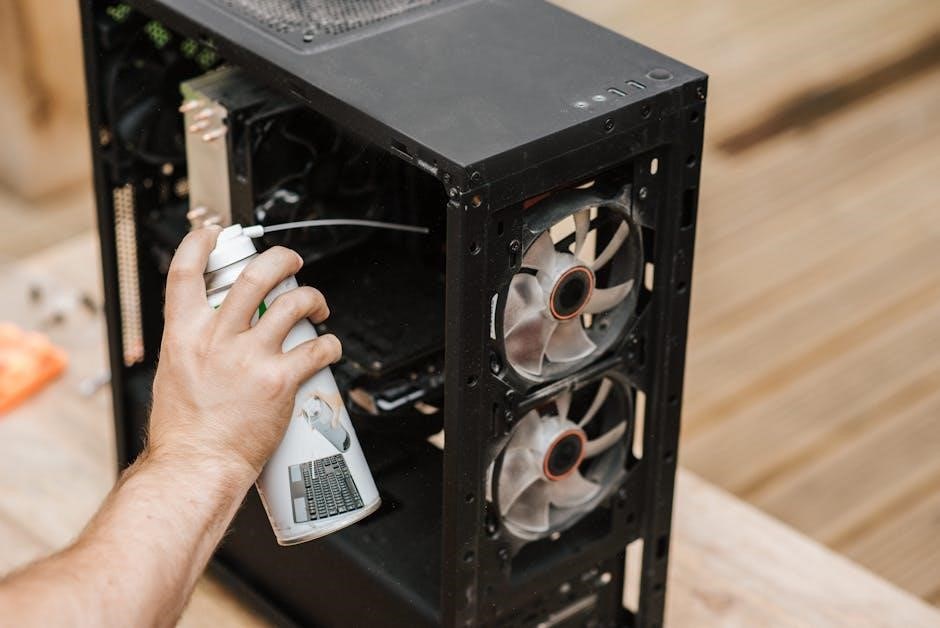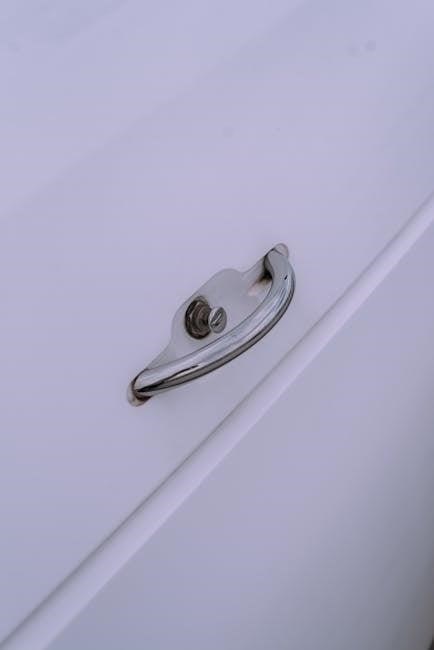
The cabinetry in your home offers a chance to showcase your design style. Selecting the right hardware complements your door and drawer fronts while coordinating with your décor. This guide will walk you through the types of cabinet hardware‚ helping you choose the best options for your cabinets.
Understanding Cabinet Hardware
Cabinet hardware encompasses both functional and decorative elements that enhance the usability and aesthetics of your cabinetry. Functional hardware‚ like hinges‚ drawer slides‚ and latches‚ ensures smooth operation and proper alignment. Decorative hardware‚ such as knobs‚ pulls‚ and handles‚ adds character and style‚ complementing the overall design of your kitchen or bathroom.
Choosing the right cabinet hardware involves considering several factors. First‚ assess the style of your cabinets and the existing décor. Modern kitchens often benefit from sleek‚ minimalist hardware‚ while traditional designs may call for more ornate or classic pieces. Functionality is equally important; consider how frequently the cabinets and drawers will be used and select hardware that is comfortable and easy to grip.
Material and finish options abound‚ ranging from classic brass and stainless steel to contemporary matte black and brushed nickel. The chosen material should be durable and able to withstand daily wear and tear. The finish should complement the cabinet color and other fixtures in the room‚ creating a cohesive and visually appealing space. Understanding these basics is the first step in selecting cabinet hardware that meets your needs and enhances your home.
Types of Cabinet Hardware: Knobs vs. Pulls
When selecting cabinet hardware‚ the primary decision often revolves around choosing between knobs and pulls. Knobs are typically smaller‚ round or oval-shaped hardware pieces that are attached to the cabinet door or drawer with a single screw. They offer a compact and often more traditional look‚ making them a popular choice for smaller cabinets and drawers.
Pulls‚ also known as handles‚ are elongated‚ bar-shaped hardware pieces that are mounted with two screws. This provides a larger gripping surface‚ making them ideal for heavier drawers or cabinets that require more leverage to open. Pulls are often favored in contemporary or transitional designs‚ offering a sleek and modern aesthetic.
The choice between knobs and pulls is not solely based on aesthetics; functionality also plays a key role. Knobs are generally easier to grip for smaller doors‚ while pulls offer better ergonomics for larger drawers. Ultimately‚ the decision depends on personal preference‚ the overall style of the kitchen or bathroom‚ and the specific needs of each cabinet or drawer.

Combining Knobs and Pulls
Breaking the mold of using solely knobs or pulls can lead to a more visually interesting and functional kitchen design. Combining these two hardware types allows for a tailored approach‚ optimizing both aesthetics and ease of use. For instance‚ using pulls on larger‚ frequently used drawers provides better grip and leverage‚ while reserving knobs for smaller‚ less accessed cabinets maintains a cohesive look.
Consider the layout and functionality of your kitchen when deciding where to place each type. In a larger kitchen‚ feel free to incorporate even three different coordinating styles of knobs and pulls to give each cabinet set its own identity. The key is to ensure that the finishes and styles complement each other‚ creating a harmonious blend rather than a jarring contrast.
Mixing knobs and pulls can also highlight different zones within the kitchen. For example‚ using pulls on lower cabinets and drawers emphasizes their accessibility‚ while knobs on upper cabinets maintain a streamlined appearance. This thoughtful approach to hardware placement enhances both the visual appeal and practicality of your kitchen design.
How to Pick Cabinet Hardware Finish
Selecting the right finish for your cabinet hardware is crucial for achieving a cohesive and stylish look in your kitchen or bathroom. The finish should complement the existing design elements‚ including the cabinet color‚ countertops‚ appliances‚ and overall style of the room. Consider the undertones of your cabinets and choose a finish that either matches or provides a subtle contrast.
Popular finishes include brushed nickel‚ stainless steel‚ matte black‚ oil-rubbed bronze‚ and polished brass. Brushed nickel and stainless steel offer a modern and clean aesthetic‚ while matte black provides a neutral yet sophisticated touch. Oil-rubbed bronze adds warmth and character‚ perfect for traditional or rustic designs. Polished brass can create a luxurious and elegant feel.
Think about the durability and maintenance of each finish. Some finishes are more prone to showing fingerprints or water spots‚ while others are more resistant to wear and tear. Choose a finish that not only looks great but also suits your lifestyle and cleaning habits. Coordinating the hardware finish with your faucet and other fixtures can create a harmonious and polished look throughout the space.
Cabinet Hardware Materials
Cabinet hardware is available in a diverse range of materials‚ each offering unique aesthetic and functional properties. Common materials include brass‚ stainless steel‚ bronze‚ zinc‚ and various alloys. Brass is a classic choice‚ known for its durability and warm tones. Stainless steel offers a sleek‚ modern look and is highly resistant to corrosion.
Bronze provides a rich‚ aged appearance‚ ideal for traditional or rustic designs. Zinc is a cost-effective option that can be finished in various colors and styles. Other materials like acrylic‚ ceramic‚ crystal‚ glass‚ wood‚ and cast iron offer distinct textures and visual appeal‚ allowing for customization and unique design statements.
When selecting a material‚ consider the overall style of your kitchen or bathroom‚ as well as the level of durability required. High-traffic areas may benefit from more robust materials like stainless steel or brass‚ while decorative accents can incorporate more delicate options like glass or crystal. Coordinating the material with your appliances and faucet finishes will contribute to a cohesive and harmonious design.

Functional vs. Decorative Hardware
Cabinet hardware can be broadly classified into two categories: functional and decorative. Functional hardware includes essential components that enable the operation of cabinets‚ such as hinges‚ drawer slides‚ and latches. These elements are crucial for the smooth and efficient use of your cabinetry.
Decorative hardware‚ on the other hand‚ primarily serves to enhance the aesthetic appeal of your cabinets. This category includes knobs‚ pulls‚ handles‚ and backplates‚ which contribute to the overall style and design of the space. While decorative hardware adds visual interest‚ it also provides a tactile interface for opening and closing cabinets and drawers.
It’s important to consider both functionality and aesthetics when selecting cabinet hardware. Functional hardware should be durable‚ reliable‚ and easy to use‚ while decorative hardware should complement the overall design scheme of your kitchen or bathroom. In some cases‚ hardware can bridge both categories‚ offering both functional benefits and decorative flair. Ultimately‚ the best choice depends on your individual needs and preferences‚ as well as the specific requirements of your cabinetry.
Cabinet Hardware Styles: Matching Your Décor
Selecting the right cabinet hardware style is crucial for creating a cohesive and visually appealing space. The hardware should complement the overall décor of your kitchen or bathroom‚ enhancing the existing design elements and reflecting your personal taste. Consider the dominant style of your room‚ whether it’s modern‚ traditional‚ transitional‚ or something else‚ and choose hardware that aligns with that aesthetic.
For modern kitchens and bathrooms‚ opt for sleek and minimalist hardware with clean lines and simple shapes. Chrome and stainless steel finishes are popular choices‚ offering a polished or brushed look. Traditional spaces‚ on the other hand‚ often benefit from more ornate hardware with intricate details and classic shapes. Antique brass‚ oil-rubbed bronze‚ and pewter finishes can add a touch of warmth and elegance.

Transitional designs blend elements of both modern and traditional styles‚ allowing for greater flexibility in hardware selection. Consider combining modern shapes with traditional finishes or vice versa to create a unique and personalized look. Ultimately‚ the goal is to choose hardware that enhances the overall design of your space and reflects your individual style.
Cabinet Hardware Sizes: Proportions and Placement
Choosing the right size cabinet hardware is essential for both functionality and aesthetics. The size of the knobs and pulls should be proportionate to the size of the cabinets and drawers. For smaller cabinets and drawers‚ smaller knobs and pulls are generally more appropriate‚ while larger cabinets and drawers can accommodate larger hardware.
As a general guideline‚ cabinets between 12 and 30 inches should have a 4- to 8-inch pull or a large knob. Drawers over 30 inches should use a pull over 8 inches‚ or you can incorporate two pulls or knobs for a balanced look. When it comes to placement‚ knobs are typically placed in the corner of cabinet doors or in the center of drawers.
Pulls‚ on the other hand‚ are usually mounted horizontally on drawers and vertically on cabinet doors. Consider the style of your cabinets and the overall design of your space when determining the optimal size and placement of your cabinet hardware to achieve a cohesive and visually appealing look.
Essential Functional Hardware: Hinges and Catches
While knobs and pulls contribute to the aesthetic appeal of cabinetry‚ hinges and catches are the unsung heroes ensuring functionality. Hinges are crucial for attaching cabinet doors to the frame‚ allowing them to swing open and closed smoothly. There are numerous types of hinges available‚ including concealed hinges‚ which offer a clean‚ seamless look‚ and decorative hinges‚ which add an extra touch of style.
Cabinet door catches are designed for doors without self-closing hinges‚ keeping them securely closed against the frame. Magnetic catches are a popular choice‚ utilizing a magnet to hold the door in place. Roller catches use a roller mechanism for the same purpose. Selecting the right hinges and catches is vital for ensuring the longevity and proper function of your cabinets.
Investing in high-quality functional hardware prevents sagging doors and ensures smooth operation. These components are often overlooked but play a significant role in the overall performance and user experience of your cabinetry.
Installation Basics
Installing cabinet hardware can seem daunting‚ but with the right tools and preparation‚ it’s a manageable DIY project. Before you begin‚ gather essential tools like a drill‚ screwdriver‚ measuring tape‚ level‚ and pencil. Accurate measurements are key to ensuring proper alignment and a professional finish. Start by marking the desired location for your knobs or pulls on the cabinet doors and drawers.
Use a template or measuring tape to ensure consistent placement across all cabinets; Drill pilot holes for the screws‚ being careful not to drill through the cabinet face. Attach the hardware using the appropriate screws‚ tightening them securely but avoiding over-tightening‚ which can damage the cabinet.
For hinges‚ carefully align the hinge plates with the cabinet frame and door‚ securing them with screws. Test the door’s swing and adjust as needed to ensure smooth and even closure. If you’re replacing existing hardware‚ you may need to fill old holes with wood filler before drilling new ones. Taking your time and paying attention to detail will result in a professional-looking installation that enhances the beauty and functionality of your cabinets.




